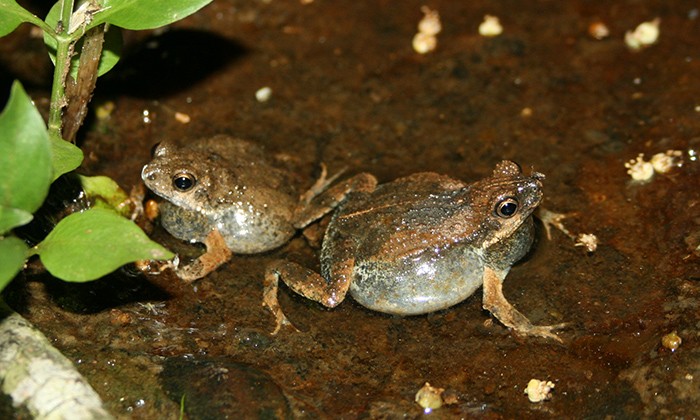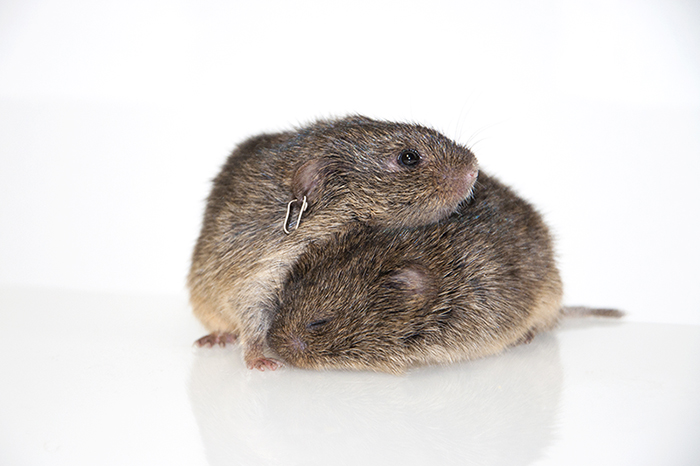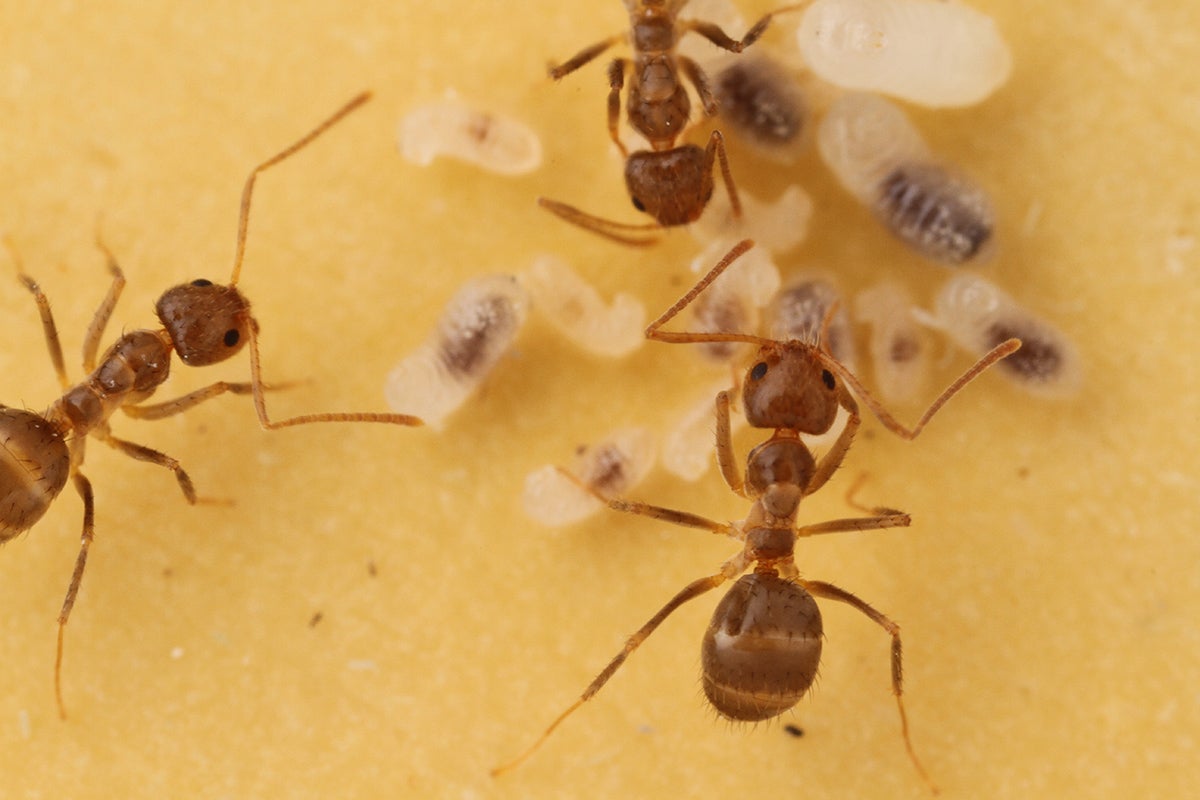Evolutionary Roots and that Loving Feeling
What can the Animal Kingdom tell us about love?

In honor of Valentine's Day, we're taking a look at some evolutionary lessons about love and attraction from College of Natural Science researchers in the Department of Integrative Biology.
Reward and Bonding
Steven Phelps, a professor in the department, is currently a Radcliffe Fellow and working on a book for a general audience all about the biological drivers of intimacy. As Harvard's Radcliffe Institute summarized it, Phelps's project will uncover "how and why individuals of all species—including humans—form relational bonds."
"A bond is a kind of pairing between two brains," said Phelps, during "The Science of Love" presentation at last year's Texas Science Festival. "There's an agreement to share life's risks and opportunities. Those include caring for young, social interactions and navigating the opportunities and risks associated with the natural world."
Bonding generates certain responses and changes in the brain, particularly the reward centers of the brain. Phelps is interested in the connection between bonding and how the brain responds to stress.
"One particularly important set of brain regions for forming bonds are related to rewards. So, when we talk about love, we often talk about it as like an addiction. And that's very much true biologically," Phelps said. "We find that these brain regions that are responsible for addiction, food rewards, sex rewards, are the same regions that are important for forming bonds."
By understanding how bonding and relationships shape the brain we may be able to understand how this affects lifelong health and wellbeing – of humans and an adorable species Phelps studies, called the prairie vole.

Wired for Monogamy
The prairie vole is a tiny mammal that is often all about family values. They usually mate for life and are monogamous. They build nests together and raise young together. And researchers like to study them because of what we can learn about the brain and bonding.
Studying prairie voles, Phelps and a team of researchers found that differences in DNA drive some male voles to be monogamous, even as others seek more partners.
"This brain variation isn't just there by chance. It isn't random," said Phelps. "It's actually something that [natural] selection has kept around for a very long time."
The researchers found that the two types of male vole—faithful versus wandering—have genetic differences noticeable in the activity in specific brain regions, including one that is important for spatial memory. The researchers speculate that faithful males evolved to be stronger in this area to be better at keeping tabs on a mate.
Anything for Love
Charles Darwin originally developed a theory of sexual selection where he identified mate choice and competition for mates as the evolutionary explanations behind a lot of odd behavior in the animal kingdom. But Mike Ryan, another UT Austin professor of integrative biology, has gone beyond Darwin's model, to explore the key mechanisms behind much of the beautiful variety in the animal kingdom that, on its face, would seem to go against survival of different species.
"Bright colors in fishes, songs in song birds, big manes in lions—none of this stuff is good for survivorship," Ryan said, when he published his own popular science book, A Taste for the Beautiful. "What Darwin realized right away was that beauty kills."
Yet species evolve to do things that the opposite sex finds attractive. In particular, it's not uncommon for males of a species to learn courtship strategies that can seem rather foolhardy, if it weren't for its proven effectiveness in wooing females. One case in point: it turns out that apparent risk-seeking urban males really are more appealing – at least to female tungara frogs. Ryan and his team found that male frogs in urban environments had more conspicuous and complex mating calls than their rural counterparts. That amount of racket can easily attract a predator, so rural frogs learn to keep it down to avoid the attention of a predatory bat that zeroes in on frequencies in the tungara frog's mating calls. But in experiments, female frogs preferred the urban frog's tendency for more extensive calls. Talk about risking your life for love.



